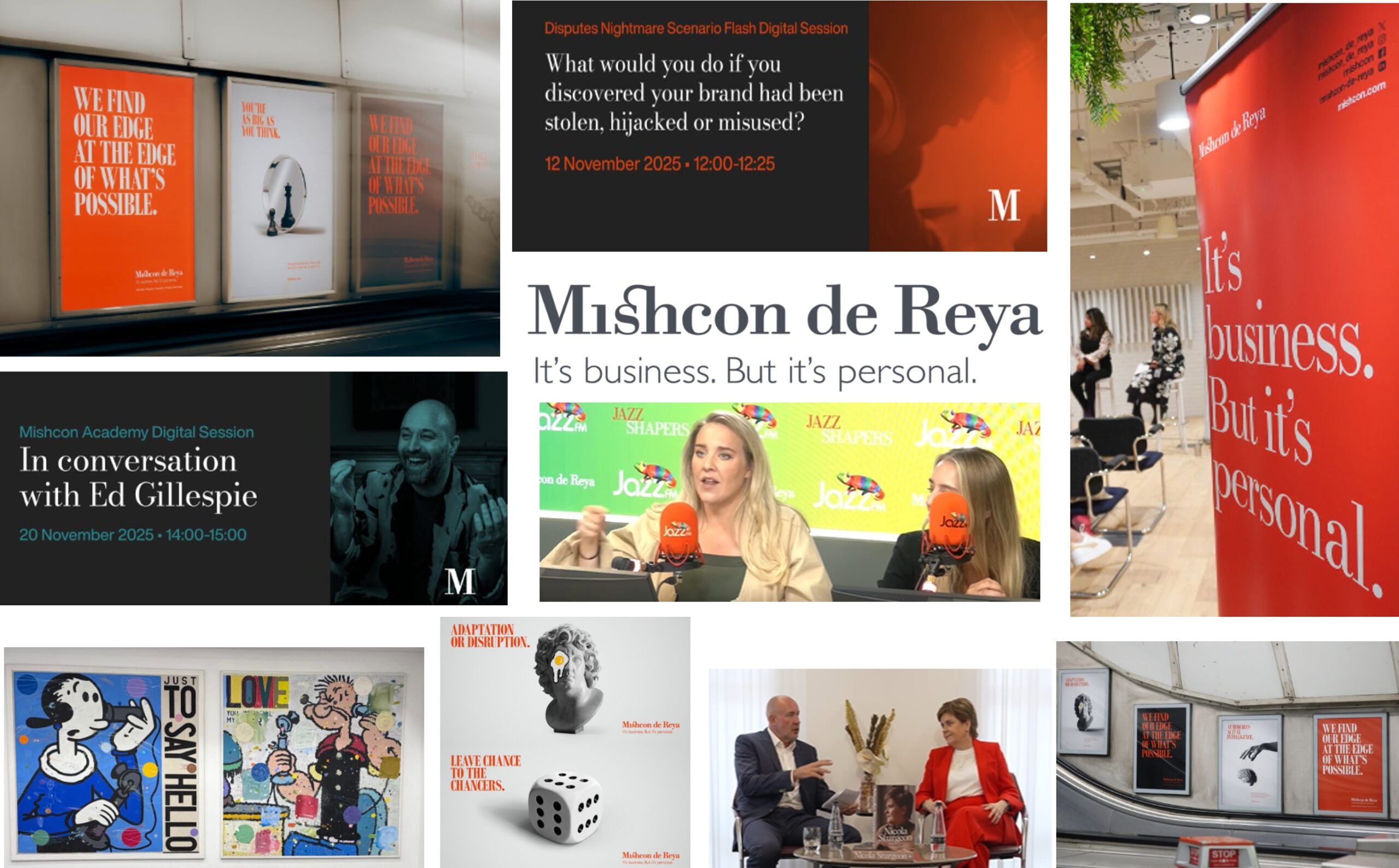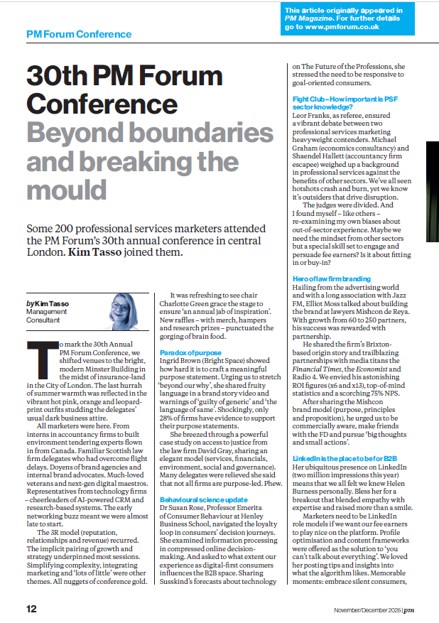
This is a summary (and an additional learning resource for delegates) of last week’s M&BD planning workshop through the PM Forum. Key issues in Marketing and Business Development Planning: Engage, Analyse, Expand, Innovate and Measure. The three modules looked at M&BD fundamentals, the journey through the M&BD planning process and how to address planning issues specific to professional service firms. The UK delegates were joined by several from Hong Kong and Shanghai (where they started at 430pm compared to the UK delegates at 930am). UK and offshore law firms, barristers’ chambers and accountancy firms were represented. Delegate poll results and break out summaries are shown below.
Engage fee-earners in the M&BD planning process
Nearly all delegates faced a challenge with engaging fee-earners in the M&BD planning process. There were many reasons for this.
Everyone is so busy. M&BD teams are often locked into a perpetual cycle of responding to requests from individual fee-earners to “push out” content. This means that we often fail to discover and respond to client interests and needs. It lacks a pull or client-centric approach.
Some reported that the reward systems worked against initiatives that reach beyond the immediate client and market focus of individual fee-earners (e.g. across the firm. other teams and territories).
Complacency – where there was perceived to be sufficient work and/or a lack of capacity – was another barrier. Yet fee-earners at full capacity were needed to support others in the firm who were not so busy by sharing their content and amplifying their messages.
We all need to take a step back. Breathe. Focus on what the firm is trying to achieve overall. Research and listen carefully to what clients need. Set goals. Select the best strategies to achieve those goals. Prioritise action. Allocate the necessary resources – of which fee-earner time is often key. Prepare integrated campaigns. And present evidence of the results achieved.
Communication and education are required to manage expectations and promote enthusiasm and momentum. This is an ongoing dialogue. And persistence is needed. A bite-sized approach to engaging fee-earners in the planning process was suggested: marketing planning process into a professional service firm (kimtasso.com)
There are lots of articles on internal communications, buy-in and stakeholder engagement. For example:
Internal communication – Why, how and what (kimtasso.com)
Animal magic of buy-in and stakeholder engagement (Video) (kimtasso.com)
Ten top takeaways on stakeholder engagement and buy in (kimtasso.com)
all about buy-in in professional services (Manchester and Dublin 2019) (kimtasso.com)
Analyse
Following the ideas for promoting fee-earner engagement, a key way to do this is to present them with evidence. So gather the necessary internal and external data and conduct the relevant analyses and research.
We looked in detail at the marketing audit process and what internal and external information to collect and analyse. We reflected that the popular SOSTAC® planning process starts with a situation analysis.
The polls revealed that some firms had inadequate client and work source analyses and other firms needed to strengthen their competitor analyses. Thorough analysis provides stronger foundations for better quality and more effective M&BD plans.
Sharing relevant analyses with fee-earners sparks their curiosity and interest. It prompts discussion of future opportunities and threats. And an assessment of the results from past activities. If fee-earners engage in the data they are more likely to suggest what action could and should take place.
Delegates reported a range of issues preventing an improvement in the quality of M&BD plans – from the difficulty in obtaining the necessary data at the outset, through time to conduct structured analyses of the data and the identification of opportunities and threats as well as brainstorming creative ways to address them. The lack of engagement with data prevented the creation of integrated marketing and business development (selling) campaigns that supported the emerging client journeys.
Expand internationally
Global trends always impact on domestic plans. And many firms look to overseas markets for growth.
Several delegates were considering how to expand internationally. Sometimes this required a move out of domestic social media channels (e.g. WeChat in China) to social media networks in target countries.
Brands that were popular in some territories needed to raise their profile and sometimes alter their position in foreign markets.
We also considered channel management strategies for referrer and referrals management. And we touched on ideas to integrate vertically and horizontally through the value chain. In some cases this might involve opening in new territories, forming international alliances or mergers and acquisitions.
The following reports may be useful:
Professional Services Global Market Report 2022 (globenewswire.com) (December 2021)
Law Society Research Report – Future Worlds 2050 (kimtasso.com) (July 2021)
Professional Services Industry Overview – Market Size, (globenewswire.com) (May 2021)
Innovate – Be more innovative in M&BD
Everyone commented on the fast pace of development in marketing channels, tools and approaches. It was a challenge to keep up with changes and to assess which might be relevant for professional services firms.
Some reported that there was often complacency – a tendency to stick to what had been done before. This led to a repetition of “tried and tested” activities – even if the results did not support them.
There was sometimes a lack of appetite for trying new approaches by fee-earners who might be risk averse or resistant to trying out innovative initiatives. Marketers needed to be bold, brave, persuasive and confident in suggesting new ideas.
Measure – Prove Return on Investment (ROI)
Many reported that ROI calculations and reports were insufficient in their firms.
Reasons included data availability and lack of agreement on which results, costs and resources were to be considered. Some failed to monitor a major cost – that of fee-earner time in relationship nurturing and development. Others reported extensive buying cycles and a lack of clarity between sales from existing and target clients.
Where business development for existing clients were concerned, this typically includes a variety of relationship management activities by many fee-earners which made it especially hard to measure inputs, outputs and outcomes.
Various case studies were examined which reported varying levels of ROI. A key question remained on “What does good look like?” – and how this varies for mature vs. new or specialist vs. general services. Some suggested focusing on reporting profit improvement instead.
It may take time to build up to a full ROI analysis – especially where both digital and traditional methods of marketing and business development were deployed. As a starting point, develop meaningful (to fee-earners) M&BD objectives – such as enquiries, engagement, conversations and new projects – where it is usually easier to obtain benchmark and results data.
PS I think it is timely to include a recent article from Professor Malcolm McDonald on the importance of marketing planning in this age of rapid change and uncertainty The Post-Covid CMO in the Digital Age: The need for marketing planning is greater now than it has ever been | Worshipful Company of Marketors. His key points are:
- Social media’s need to be authentic and immediate cannot be accommodated by traditional central control over messages. Modern CMOs see their role as guiding and inspiring thousands in their firms to communicate consistent brand values and messages. The dilemma facing CMOs is “how to maintain an integrated and coherent approach to the market”.
- A July 2019 article in Catalyst compares this situation as being like a human without a brain, who would be just a collection of activities that cannot operate. Likewise, a global marketing team needs a strategic plan, a north star to gather round, something that will guide compliance and accountability.
- The skill of developing strategic marketing plans is in greater demand today that at any time in the history of marketing. In today’s highly competitive environment, the major sources of shareholder value creation are the intangible marketing assets of the business, such as brands, customer relationships and channels of distribution.
- Research at Cranfield shows that successful marketers make a major contribution to corporate wealth by understanding markets, doing proper needs-based segmentation, developing quantified value propositions, competitive analysis, portfolio analysis and managing marketplace risk, all encapsulated in a strategic marketing plan.
PPS I’m putting together a separate blog on the question – which keeps arising – of future trends in professional services marketing and business development.
Delegate key takeaways and actions
- Review our business plan
- Conduct a marketing audit
- Review case studies of PSF marketing and business development
- Meet with BDs to talk through their strategies
- Assess competitive position
- Look at pricing strategies
- Increase BDM budget
- Increase networking
- Target existing clients in different jurisdictions
- Assess performance of past content
- Develop a comprehensive strategic marketing plan
- Align and repurpose content
Delegate poll results
Are you qualified in marketing?
- 56% Yes
- 44% No
How much experience do you have in M&BD planning?
- 22% Hardly any
- 0% A little
- 56% About average
- 22% A lot
- 0% A huge amount
Which topic is of most interest?
- 11% Marketing/BD fundamentals
- 56% Marketing/BD planning process
- 33% Overcoming marketing/BD planning issues
Where is the greatest challenge in your M&BD planning:
- 20% Marketing
- 40% Selling (winning new clients)
- 10% Existing client development
- 0% Referrer development
- 30% All of them
Which segmentation approaches does your firm use?
- 70% Industry or sector
- 10% Geography/territory
- 10% Relationship type (existing/new)
- 10% Needs based
- (None for size of business, size of transaction, decision-making, nature of buyer)
Do you have access to:
- 50% Business plan
- 50% Sector plan
- 40% department/service line or team plan
- 30% Territory plan
- 40% None
Which frameworks for M&BD planning do you use:
- 60% Sales funnel/pipeline/opportunity management
- 60% Where now? Where to? How?
- 50% Awareness/Engagement/Conversion/Loyalty/Advocacy
- 30% RACE
- 20% SOSTAC
Most used planning tools identified as:
- 4/7Ps Marketing basics – What are the 4Ps and why are they still useful? (kimtasso.com)
- Brand Brand Basics (Video) – What is a brand? Why are brands important? (kimtasso.com)
- Competitor analysis and positioning
- KAM (i.e. Client Coffee Plan)
- Localisation
- RACE
- SOSTAC
- SWOT
How would you rate the M&BD plans at your firm:
- 0% Very poor
- 10% Poor
- 50% Average
- 40% Good
- 0% Excellent
Our marketing/BD audits are: Marketing basics – Marketing audits with onions and pestles (kimtasso.com)
- 10% Poor – we need more analysis
- 60% OK – internal analysis is good (not so much external)
- 30% Good – but we could improve
Our competitor analysis is:
- 0% Very poor
- 18% Poor (out of date)
- 36% OK
- 27% Good
- 18% Great (constantly updated)
Our client analysis is: client portfolio management with dinosaurs – Be more T Rex (kimtasso.com)
- 0% Very poor
- 10% Poor
- 40% OK
- 50% Good
- 0% Excellent
Our objectives are:
- 10% Poor
- 60% OK
- 20% Good
- 10% Excellent
How well do you think your firm is differentiated from competitors?
- 60% Average
- 30% Good
- 10% Excellent
Our M&BD planning suffers most from:
- 64% Soft issues (e.g. culture, attitudes)
- 36% Hard issues (eg data, structure, rewards)
What is the biggest M&BD planning challenge?
- 36% Engagement (“Too busy”)
- 27% Data and knowledge
- 18% Engagement (“Too many initiatives”)
- 9% Culture (reward systems/client protectionism)
- 9% Culture (short termism)
We address assumptions and risk in our M&BD plans:
- 36% Yes
- 36% Sort of
- 27% No
Break out session summaries
Reasons we need plans/value of plans
- Clarify goals and show results (outcome oriented)
- Align stakeholder needs and expectations
- Target investment and efforts appropriately
- Time and resource management
What plans should contain Marketing planning in a nutshell – simple and complex plans (kimtasso.com)
- Persona / audience
- Goals
- Budget
- Initiatives
- Timeline
- Work allocation
What external and internal information do you need for a M&BD audit?
- Data (CRM system)
- Digital and content analytics
- Fee-earner time
- Different jurisdictions
What PESTLE factors might affect your markets/clients in the future?
- Political – Government policy, funding, initiatives
- Economical – Pandemic, cost of living crisis
- Technological – Automation
- Environment – Sustainability, diversity and inclusion, governance
Steps to prepare a M&BD plan
- Analysis (Internal and external, past activities and results, clients and work sources etc)
- Engagement with senior and junior fee-earners
- Goals (align with business plan)
- Ideas and strategy options
- Strategy selection
- Develop tactics and campaigns
- Work and project planning (timeline and budgets)
- Content and event planning
Related posts on M&BD planning
Ten top takeaways on stakeholder engagement and buy in (kimtasso.com) April 2022
Book review: B2B Marketing strategy (kimtasso.com) February 2022
Future Marketing (Business Development) Manager (kimtasso.com) December 2021
Marketing and Business Development Planning in a Nutshell (kimtasso.com) November 2021
Strategies for developing a private client practice – Business development (kimtasso.com) September 2021
Marketing and BD planning – Segmentation, Rock Stars and Engagement (kimtasso.com) February 2021
marketing planning process into a professional service firm (kimtasso.com) March 2018
Marketing planning in a nutshell – simple and complex plans (kimtasso.com) June 2017
marketing planning – stepping stones, persuasion, motivation (kimtasso.com) September 2015







